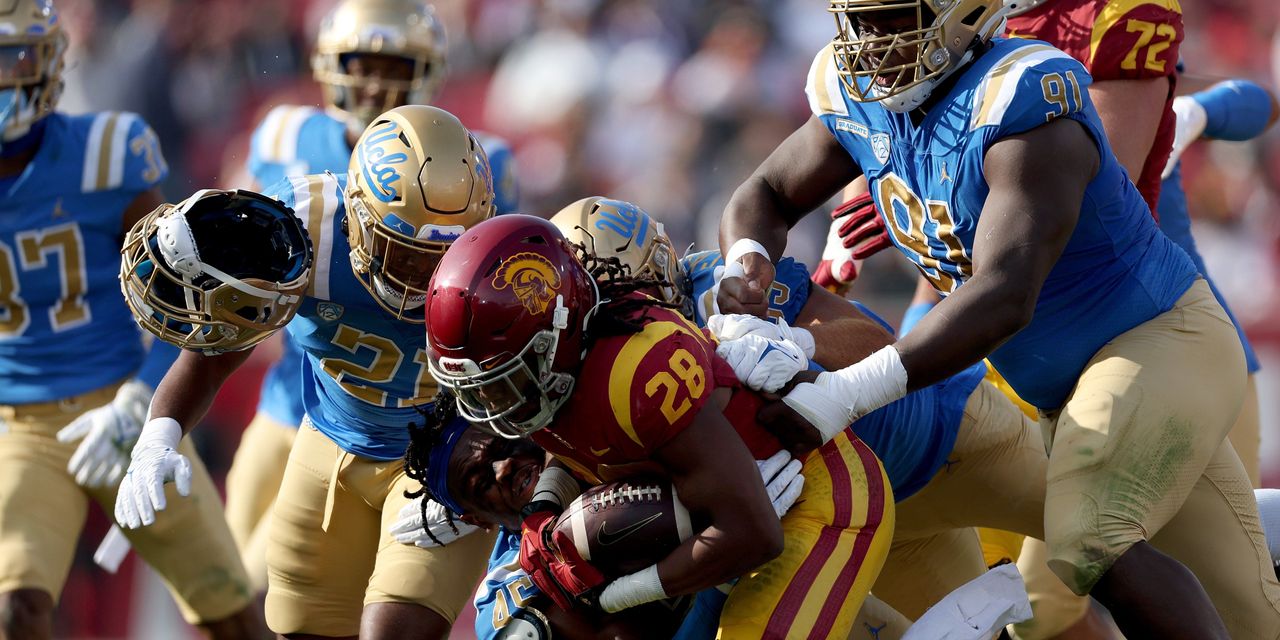Ever since the Supreme Court ruled against the NCAA in an antitrust case in 1984 and invalidated its national television contracts, college sports programs have been realigning among athletic conferences in search of larger television contracts.
Athletic conferences used to be based on geographic proximity and academic affinity. Why, after all, if schools really cared about educating their athletes, as they continue to allege, would you have them flying from one coast to another every week, when they could be hopping on a bus to a nearby town or adjacent state?
It was media market concerns that led the Big Ten to invite Rutgers (with its New York City television market) and Maryland (with its Baltimore and Washington, D.C. markets) in 2014 to join its ranks. And there were parallel considerations that prompted the Big Ten to accept UCLA and the University of Southern California as the 15th and 16th conference members on Thursday.
From the perspective of ULCA and USC, once national football powerhouses and now fading also-rans, the Pac-12 conference earns roughly half the television money as the Big Ten. Coupled with exploding costs from uncapped educational benefits educational awards up to $6,000 per student, thanks to last year’s Supreme Court decision, as well as millions of dollars being diverted away from sponsorship money and donations to feed the “name, image and likeness” (NIL) contracts that go straight into the bank account of the athlete, the opportunity to enter one of the two strongest conferences in the county was too good to pass up.
What’s next? Last year Texas and Oklahoma bolted from the Big 12 to align with the SEC, leaving the already weakened Big 12 on its knees. The ACC is a strong basketball conference but a second-tier football league, and football is where the big bucks are.
The all-powerful Power Five is about to become the Power Two, perhaps with 18 to 20 schools each. Both the SEC and Big Ten will be solicited by desperate suitors. Demand for entry will exceed entry slots, and the Power Two can be expected to drive auspicious bargains.
There is little doubt that Stanford, University of California Berkeley, the University of Oregon and the University of Washington will be knocking on the door of Big Ten Commissioner Keith Warren. He and his troops will assess the relative value of adding the San Jose-San Francisco and/or Seattle market relative to the prospect of splitting its media dollars among two or four additional schools.
Greg Sankey of the SEC, in turn, can expect some phone calls from schools in the Big 12 and ACC.
This latest phase of the collegiate merger and acquisitions game underscores what has become increasingly apparent over the last 10 years: the NCAA is incapable of governing the college sports system. The advent of NILs a year ago together with the introduction of the transfer portal has created something very close to an open labor market for top college athletes.
Some athletes will receive tens of thousands of dollars from the NIL marketplace. A few will earn over $100,000. The vast majority of college athletes will earn less than $1,000, after long hours honing their social media skills and embellishing their sites.
More than 98% of college football and men’s basketball players will never play a single game in the NFL or NBA. The best way to serve these college athletes is to provide them with a robust education, not by further commercializing college sport.
But the NCAA is incapable of slowing down or redirecting the commercial juggernaut. The courts lean toward supporting the marketization process. The one entity with the authority to exert some control is Congress. While several members of Congress have introduced regulatory reform bills, divisions between and within the political parties have thus far produced inaction.
Some reformers are calling for the part of college football eligible for bowl games (FBS) to be separated from the other sports. Let football engage in untrammeled marketization, they say, and reign the other sports back into an educational model.
While this might solve some problems, it will create others. How, for example, will Title IX and the Olympic sports be funded?
The United States is the only country that has a commercialized system of intercollegiate athletic competition. It is time for public policy makers to take a close look at this system and facilitate a new model – much like Congress did in the 1970s to reform our system of amateur and Olympic sport. Hopefully, the latest evidence of a system spinning out of control will awaken Congress from its slumber.
Andrew Zimbalist is the Robert A. Woods Professor Emeritus of Economics at Smith College in Northampton, Mass., and “Whither College Sports: Amateurism, Athlete Safety, and Academic Integrity.”
More on college sports
College athlete group files complaint with NLRB, seeking employee status
Some high-school athletes are now inking collegiate-style NIL marketing deals
Women are set to make more money than men on NIL deals in college basketball
College athletes show off their creative sides after being permitted to earn money
